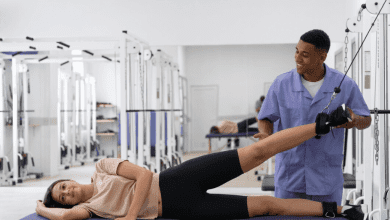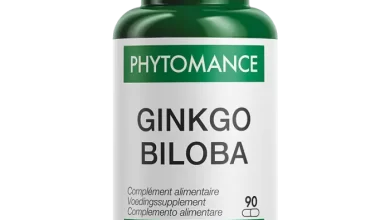Health and Fitness
How make I mine swimming pool finished in front of this one summer?

t will be a summer in which we will especially look for the holiday feeling in our own garden. If we can go by the past few years, we could expect tropical temperatures in the coming summer months with lifeguard training near me.
A swimming pool provides cooling and fun, but also requires the necessary maintenance. It’s not just filling the bath and splashing. For example, you must keep a close eye on the pH and chlorine levels in order to be able to enjoy your pool safely and for as long as possible. There are many maintenance products on the market, but what should you really pay attention to? In this article we highlight 5 points of attention.
1. THE PH VALUE
First, it is important to check the pH value of the water. Chlorine can only do its job if the pH is also optimal. This value is best between 7 and 7.6, and can be measured with a reusable pH meter or disposable strips. Test strips are the most recommended as they are the best value for money and you can also measure chlorine content, alkalinity and hardness. A pH value higher than 7.6 ensures that the chlorine will have less disinfectant effect. This can lead to red eyes or dry skin. If the value is too low, the water is too acidic and can turn brown. To get the pH level up to standard, you can adjust pH up or pH downto add. These are available in both powder and liquid form with lifeguard training near me.
2. THE CHLORINE CONTENT
Chlorine is essential to obtain a clear and hygienic swimming pool. However, don’t take the risk of throwing some tablets into the pool, but measure the chlorine value first. Also, do not combine different types of chlorine because this can cause a chemical reaction. For an outdoor pool, the ideal chlorine value is between 1 and 2.5 mg/litre of water.
Add fast-acting chlorine immediately after filling so that your pool is properly disinfected, and you can dive into it a few hours later. Afterwards you can use long- acting chlorine (every 2 weeks) to maintain the chlorine level. You can also choose from small and large chlorine tablets. It is important to use the correct dose for the number of liters of water. Of course you do not use a large tablet of 200gr in a children’s pool.
Do you not tolerate chlorine well, or do you prefer not to use this product too often? Then you can use zeolite. This is a natural & volcanic mineral that can replace the sand in the sand filter. These minerals can halve the chlorine consumption, and backwashing has to be done less often as a result. An additional advantage: zeolite lasts up to six years.
3. GET OUT OF DIRT
It is almost impossible to keep the pool completely clean. For example, remnants of sunscreen or blades of grass regularly surface. You can prevent a lot by putting a foot bath (with chlorine) in front of the pool. Take a dip before diving into the pool, and the dirt will remain behind. It also provides additional disinfection. It is also recommended to add Cristal clear immediately , and to repeat weekly, so that the pool water remains beautifully clear.
Is the pool water already slightly contaminated? Then Oxy pool & spa is the right product. This is a chlorine-free shock treatment that gets rid of organic pollution such as urine, oil,… This way you can halve the chlorine use, but it is certainly not a replacement for chlorine. You can also purchase a special pool vacuum for a thorough cleaning. But the most important part for a clean swimming pool is the filter with lifeguard training near me
4. SAND OR PATTERN FILTER?
We can divide the filters into two large groups: the sand and cartridge filter.
A sand filter is usually slightly more expensive, but also more powerful, so that it can also remove small dirt. While the cartridge filter works less precisely, and will only suck up the largest dirt. These cartridge filters are often supplied with small inflatable pools, and do their job well there too. Do you opt for a larger pool? Then we recommend a sand filter.
Due to the strong circulation, you will not only be able to enjoy a cleaner pool, but you will also need a smaller amount of maintenance products. It is also important to have the filter backwashed weekly. This means that the pump will work in the reverse direction, loosening all the sand and dirt in the filter to avoid blockages. By adding a flocculant (liquid or in socks) to the skimmer you remove even more organic contamination that cannot be filtered away. You can do this weekly or in a higher dose as a treatment in the winter.
5. WINTER READY
Is summer over? Then you better prepare your pool for winter. Give a smaller inflatable pool a good scrub before putting it away. You can use the Winter proof for a larger or built-in swimming pool . This ensures that the water can remain in your pool during the winter and is quickly ready for use in warm weather. Finally, it is better to cover the pool with a tarp against falling leaves. That will save you a lot of cleanup work in the spring with lifeguard training near me.
Some have every inch of their flesh covered in neoprene, others wear just a swimsuit. Personally, I don’t wear a wetsuit during my winter dives. Swimming in a swimsuit makes me feel the moment more intensely. However, I do wear a neoprene cap, to avoid losing heat from my head. Neoprene gloves and socks make a big difference in protecting our extremities. The pain in your fingers and toes can be too much to bear if the water is below ten degrees. Without a doubt, these accessories make my sessions much more enjoyable.






